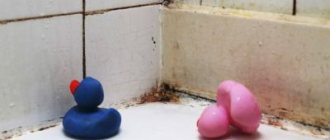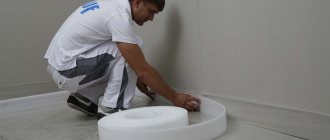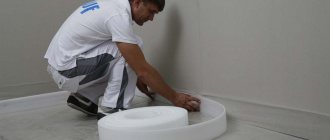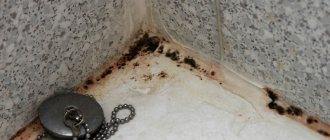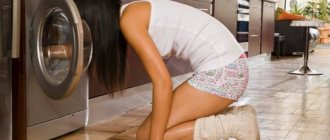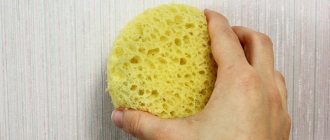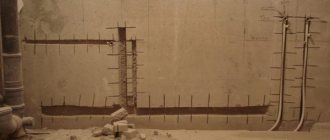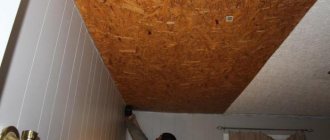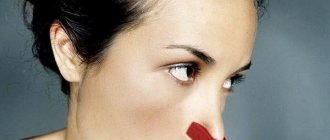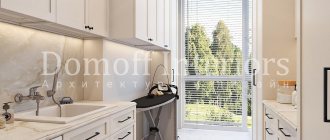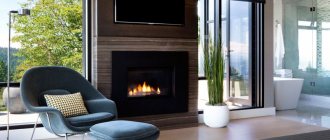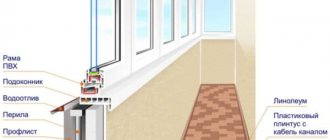Mold is not the most pleasant neighborhood. No one is safe from its appearance. It becomes a source of unpleasant odor, allergies and even some diseases. Today we will tell you the reasons for its occurrence, as well as effective methods to combat it.
Types of mold
Let's get straight to the point:
- Type of white mold
Many have seen her and know what she looks like. The soil in which houseplants are planted emits steam due to excess moisture. A white coating appears, which is mold. It is not dangerous for humans unless you have special sensitivity and allergies.
- Type of green mold
This type is observed on food remains that are in a confined space. For example in a container. It is also found on building bricks. Green mold that gets into the stomach causes various types of diseases and poisoning.
- Type of black mold
The most dangerous species. It appears on the walls, ceiling, flooring. Affects different types of surfaces. If you leave it and do nothing, you will have problems sleeping, mold will cause dizziness, asthma, headaches and even increase a person’s temperature. The most dangerous consequences are dermatitis, lung cancer, pneumonia and bronchitis.
- Type of blue mold
This type is noticed on a wooden surface. This could include parquet flooring, picture frames and furniture. It comes out from under the paint layer and looks like a dark bluish coating.
- Type of rotten mold
Also affects wooden surfaces. Her color palette is multifaceted. From gray to brown shades. The wood then cracks and becomes lighter.
No one is immune from mold. Finishing materials do not guarantee that you will never have one. Mold doesn't look good. In addition, it is dangerous to health, so as soon as you see its appearance, start exterminating it.
Objective danger to the body
Any mold on the wall in an apartment is anti-aesthetic and, among other reactions on the part of a person, causes persistent disgust. It is quite understandable: it is unlikely that anyone will like disgusting swamp-colored spots that shamelessly disfigure the beautiful and expensive decoration of the walls in the apartment. However, this would only be half the problem if the bad influence of mold was limited only to the aesthetic aspect - in fact, everything is much worse and more serious.
You will, of course, be surprised, but mold and mold are different. There are a huge number of varieties of microorganisms - and some of them pose a serious danger to the human body. But identifying spores by visual signs most often seems to be an almost impossible task. But even a person who is not immersed in the subtle nuances of medicine can determine the direct effect of spores on the body.
- asthma;
- allergic reactions;
- gastrointestinal disorders;
- infectious and skin diseases;
- Strong headache;
- eye irritation, etc.
People with weakened immune systems are most often affected by spores, so they are at risk:
- Small children;
- old men;
- sick people.
In general, the likelihood of any reaction depends on the level of concentration of spores in the air. It is believed that approximately 500 spores per 1 cubic meter
- this is the so-called threshold concentration, above which being in an apartment where there is mold on the wall or any other place is simply undesirable. Of course, everything is ultimately determined by circumstances:
- human immunity;
- the type of spores being spread;
- area of the room;
- actions of people in the apartment.
In any case, you should not put up with mold on the wall in your apartment - and if you find even a slight manifestation of it in yourself, then try to destroy it as soon as possible. There are a number of reliable methods for this - there are plenty to choose from!
Why does mold appear?
To defeat mold, it is necessary to determine the cause of its appearance. After all, its spores are found in any room, and if favorable conditions are created for it, it begins to come to life and grow.
So let's get down to business.
- High humidity combined with poor ventilation. Kitchens and bathrooms are often affected areas, for obvious reasons.
- Walls that are frozen.
- Leaking water from water pipes
- Ground moisture
- Leaky roof in a house
- A room that is rarely heated
When mold appears, a “dirty” heavy aroma appears that is familiar to everyone. It is important not only to get rid of such plaque, but also to prevent the cause of its appearance.
How to get rid of black
Of the 200 types of mold that exist, 20 grow in homes.
White mold looks like fluff.
It spreads very quickly throughout the apartment and is harmful to health. Therefore, you need to clean it off in full camouflage - a mask, gloves and closed clothing.
Green is the most common. This species is quite harmless and easy to deal with.
Dark green growths will require more effort, but are also not problematic. But black mold often contains toxic substances and can harm health and immunity. There is also a lot of hassle in the fight against it - strong drugs and frequent treatment will be required.
5.1 Why does black mold appear?
How to remove black mold in an apartment - the most tenacious and dangerous?
It will not be possible to completely get rid of the fungus unless the reasons for its appearance are identified: - Windows with increased tightness. The design prevents fresh air from entering the room; — The apartment is located on the first or last floor. The basement may flood, the roof may leak. All this serves as a source of dampness, which the fungus loves; — Residual moisture after repair. Do not open the windows, wait until the wallpaper is completely dry; — Poor ventilation in the bathroom. Where it is both humid and warm. The fungus is a real haven here; — Flowers on the windowsill.
Frequent spraying and watering add moisture to the home.
Additional reasons for the accumulation of moisture can be drying clothes, neighbors flooding from above, rotten internal pipes, and other various sources of moisture.
5.2 Removing black mold on your own
Be prepared for the fact that one procedure will not do. Spores can “sit” inside walls for years, each time appearing on the surface under comfortable conditions. If a fungal colony has formed on the tiles in the bathroom, then it is easier to deal with it. Wash, clean and dry the tiles. Treat with soda or alcohol solution.
Don't forget about the seams between the tiles!
An old toothbrush will help you get there. Check ventilation and ensure wet areas in the bathroom are completely dry. And if black specks are visible on the walls, you will have to tinker. Table vinegar will help in treating mold. Apply the product generously to the infected area and leave for an hour. Just in case, spraying can be repeated again. After completing the work, wipe all surfaces with water and ventilate the apartment.
Ordinary “Whiteness” will also be a powerful assistant in this matter.
.Wall finishing does not affect the appearance of fungus in any way; it will take root well on both wallpaper and drywall. But cleaning, ventilation and cleanliness reduce the viability of spores.
5.3 What to do to prevent black mold from coming back again
In order not to be afraid of the regular appearance of black fungus in your home, you should follow a number of simple rules: - Set up a ventilation system in the bathroom and kitchen; — When cooking, turn on the hood or open the window. Hot steam accumulates under the ceiling, on the wallpaper and can cause mold to form; — Monitor the condition of plastic windows, adjust them for the winter; — Do not get carried away with frequent spraying of flowers indoors; — Fix leaks in a timely manner.
Antiseptic primer for mold control
This product is sold in the store and is represented by a wide range of products. All you have to do is choose. It fights mold perfectly and is the most effective remedy in the war against it. Simply apply it to a surface cleaned of fungus. An important nuance. There should not be a hint of mold on the infected surface, and for this it must be thoroughly cleaned. Even if it penetrated into the deep layers of finishing. After processing, proceed to further surface finishing.
Prevention
Now let's find out how to protect your home from the recurrence of mold.
- The most common reason for the spread of mold is poor ventilation in rooms. Therefore, check the draft in your ventilation ducts with a lit match. If the match flame does not deviate towards the channel, there is no draft. To resolve this problem, you must contact your local utility service.
- Another reason for very poor ventilation is plastic windows with high tightness. By installing special ventilation valves on all windows, you will ensure a constant supply of new fresh air. Do not place furniture very close to wallpapered walls, since it is in closed areas that mold appears.
- To prevent mold from appearing under the wallpaper, ventilate the premises regularly. It is advisable to periodically open windows and vents in the house for certain periods of time. It is better to paint the jambs of window openings with special hydrophobic paints.
- Increased dampness of building materials, insufficient insulation between panels and other repair deficiencies can also cause the formation of fungus. Simple rain, which flows not through special gutters, but along the outside of the wall of the building, can lead to severe wetness. In these cases, be sure to demand that the housing organization eliminate such problems.
Bleach for mold control
Excellent against fungus on smooth surfaces. Wood, gypsum board and other porous surfaces should not be treated with this product. It's simply not effective. Also pay attention to the fact that bleach eats not only the fungus, but also the color of the finish, as well as its structure.
Wear gloves when treating surfaces with bleach. Otherwise, this product will also “eat” your hands. Dilute it with water in proportions of 1/10. After that, simply apply it to the prepared and mold-free surface.
How to get rid of fungus on the wall
The appearance of mold stains on the walls can be caused by their freezing, internal leakage of pipes, or damp building materials. The lack of protective canopies from rain and gutters also creates conditions for the accumulation of moisture in the walls and the establishment of fungus.
3.1 What is the harm from mold?
The accompanying problems caused by the appearance of mold concern not only the destruction of the home, but also affect health. If the immune system is weakened and does not resist infections well, then microspores of the fungus can cause allergies, cough, and breathing problems. Once in the lungs, they cause bronchitis, rhinitis, and asthma. The skin is manifested by dermatitis, psoriasis, eczema, itching and other ailments. Small particles of mold enter the stomach along with food, and cause stomach pain, nausea, and poisoning. Carefully!
Black mold often contains toxins that are harmful to the body. With constant accumulation, the kidneys are affected.
In addition, it spoils the appearance of the home, destroys walls, plumbing, and furniture.
3.2 Removing mold from the wall
Inspect the surface you will be working on. It happens that the fungus has “eaten” most of the wall and it needs to be dismantled. Wooden coverings are more often susceptible to this. If the outbreak is small and can be removed, then “fighting” is necessary. I will share the tips I received on how to remove mold from the wall of an apartment using folk remedies.
Copper sulfate helped me defeat fungus and black mold.
In Soviet times, this product was used to disinfect premises, and today it is successfully used to protect walls from mold deposits. Only 10 grams of powder is enough per liter of water.
Don't forget that vitriol is poisonous - wear rubber gloves and cover your face!
Just as in the case of wallpaper, it is better to moisten the walls so that the spores do not fly away and settle on other surfaces. Using a spatula or blunt knife, separate the growths from the wall. Spray the prepared solution on the infected areas or wet them with a sponge. Repeat the process 3 times during the day after each wall has dried. The final time, thoroughly wash everything with water and ventilate the apartment. It is recommended to treat the equipment with an antiseptic or throw it away.
Tip: a powerful hair dryer will help speed up the drying process.
You can buy vitriol in hardware stores; you need to use warm water - this way the sulfate dissolves faster. A spoon of vinegar will help make the product more powerful.
Aroma oils help a lot.
Monarda oil stops the growth of fungus, and tea tree oil copes with the first manifestations of plaque. Take 2 ml of oil, 1 tsp of coarse salt and 100 ml of water. Apply to the mold stain and leave. There is no need to rinse off the product.
3.3 Preventing reappearance
Look at the source of the congestion. If it is only in a certain place (under the sink, in the far corner), then the problem is poor ventilation; this area remains damp longer. Provide good ventilation and treat surfaces until the mold and odor disappear.
Think about why the mold appeared here.
You may need to adjust the heating, insulate the walls or improve the ventilation. Don't forget to fix leaks, cracks and crevices in window frames.
